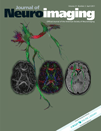The Role of Transcranial Doppler Embolic Monitoring in the Management of Intracranial Arterial Stenosis
J Neuroimaging 2011;21:e166-e168.
ABSTRACT
Intracranial arterial stenosis (IAS) is thought to be responsible for 8% of all ischemic stroke subtypes. The best medical treatment for this condition is still controversial. Transcranial Doppler (TCD) emboli monitoring may help to guide the treatment by measuring the frequency of microembolic signals (MES). We report a case of IAS where TCD emboli monitoring proved useful in establishing the mechanism of stroke by being artery-to-artery emboli and guiding therapy based on the frequent symptoms and number of MES.




